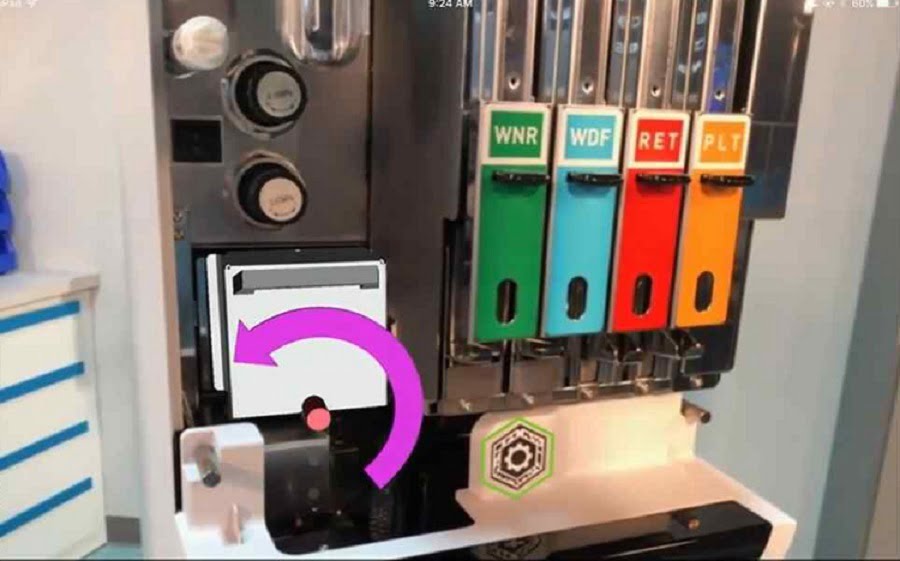
PTC announced today that it is releasing a new version of its augmented reality platform, Vuforia, with support for Microsoft’s HoloLens holographic 3D glasses and Windows 10.
Vuforia 6 introduces VuMark, which enables AR on any product. VuMark is a customizable visual code that enables AR experiences to be attached to any product or object.

Above: Vuforia’s VuMarks turn any object into an AR experience.
Needham, Mass.-based PTC had $1.3 billion in revenues last year for its businesses, which include 3D computer-aided design visualization and illustration software. Qualcomm incubated Vuforia and sold it to PTC for $65 million in October. With Vuforia, PTC can take those 3D models and easily integrate them into AR apps, so that you can see 3D models and animations as overlays via AR headsets or iPads. Those animations can show a technician exactly how to repair or maintain a physical machine in the real world. AR is expected to be a $90 billion market by 2020, and enterprise is a big part of that, according to Digi-Capital.
PTC says that Vuforia is the world’s most widely used platform for AR development. With support for phones, tablets, and eyewear, more than 30,000 Vuforia-powered applications have been published on the App Store and Google Play – and have led to more than 275 million app installs. Vuforia also supports an active developer ecosystem with more than 250,000 registered developers and more than 30,000 projects in development.
The company says that Vuforia democratizes AR development by providing simple solutions to difficult problems. For developers, the Vuforia Engine delivers advanced computer vision technology that determines the precise 3D location of certain objects in the camera’s field of view. By using this location, a developer can create AR content that will appear anchored to the object beneath.
VuMark codes can be affixed to any product or machine – either manually using a decal, or automatically printed during the manufacturing process. It is intended to visually indicate to a user that an AR experience is available, such as step-by-step instructions for assembly, use, repair, or inspection.
The VuMark Designer enables Adobe Illustrator users to create VuMarks from existing graphics and brand assets such as logos. This allows them to create VuMarks that are visually appealing, while capable of encoding any type of data, such as a serial number or URL.
“Connecting the physical and digital worlds, as well as the content and content creation tools to support the transition, is the critical next step for the enterprise workplace,” said Dan Shey, managing director and vice president at ABI Research, a market researcher, in a statement. “Launching augmented reality (AR) experiences, and ensuring the proper experience aligned with a specific model, release cycle and/or asset ID will increase efficiency and decrease error in industrial settings. Integrating the VuMark with Vuforia Studio Enterprise puts PTC and its portfolio assets at the center of this convergence, while enabling customers to control their branding.”
As announced at Microsoft Build 2016, Vuforia Engine now supports Universal Windows Platform (UWP), allowing Unity developers to easily extend existing Vuforia projects to Microsoft HoloLens and tablets such as Surface Pro 4 and Surface Book. Developers can also use Microsoft Visual Studio to add AR functionality to existing UWP applications on tablets.
“We just crossed two major milestones on our mission to democratize AR,” said Jay Wright, president and general manager for Vuforia, in a statement. “First, with VuMark we have paved the way for product manufacturers and marketers to add AR experiences to any product. And with support for Windows 10 and HoloLens, we’re creating new opportunities for developers to address the growing need for enterprise solutions. This is an extremely exciting time for developers to get started with AR.”
Support for Vuforia Engine on HoloLens is available as a public Early Access Program. Commercial release is expected this fall.
[Source: VB]




